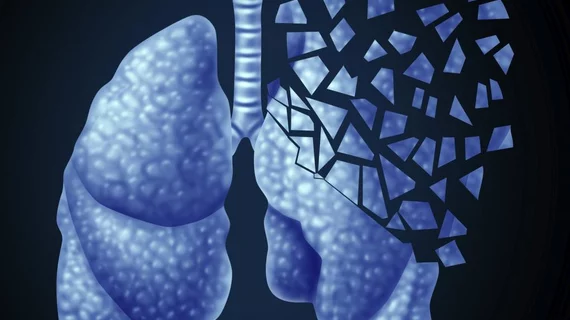Are CT lung cancer screening trial markers incorrectly predicting mortality rates?
Though many single-arm studies using "surrogate markers" have predicted CT screening can reduce lung cancer mortality by 80 percent, randomized clinical trials with larger population cohorts have found such screening has reduced mortality by less than 20 percent, according to new research published June 8 in the Journal of the American Medical Association, Oncology.
"Some researchers have considered improvements in surrogate markers of screening benefits to be synonymous with evidence that CT screening is improving patient outcomes," wrote corresponding author Kaitlin Woo, MS, from the department of epidemiology and biostatistics at the Memorial Sloan Kettering Cancer Center in New York, and colleagues. "Yet our analysis suggests that drawing such a conclusion is inappropriate."
Using statistical software, Woo and colleagues assessed the relationship between the benefits observed from CT lung cancer screening and three separate surrogates of benefit in each of 33 sites of the National Lung Screening Trial involving 53,452 heavy smokers (59 percent men, with an average age of 61).
The team used different markers to determine whether CT lung cancer screening led to a 20 percent reduction in mortality during the trial, including the following:
· The proportion of stage 1 lung cancer diagnosed in the CT arm, with a logarithmic transformation applied to improve adherence to mathematical assumptions.
- Lung cancer specific survival at four years among participants in the CT arm found to have stage 1 lung cancer, with censoring was either for death from another cause or end of follow-up.
- The ratio of the proportion of stage 1 lung cancers diagnosed between the study arms, with a logarithmic transformation applied.
The site-level magnitude of lung cancer mortality reduction was not associated with either the proportion of stage 1 lung cancers diagnosed in the CT arm or four-year lung cancer-specific survival rate of participants in the CT arm diagnosed with stage 1 lung cancer.
"The difference in the proportion diagnosed with stage 1 lung cancer between study arms was neither correlated with the difference in lung cancer mortality nor did it attenuate the main effect of the intervention in a regression analysis," the authors wrote.
Overall, Woo and her colleagues concluded that surrogate markers shouldn't be used to evaluate the benefits of CT screening in lung cancer patients due to poor accuracy and more dependable and accurate markers should be sought out.
"We base this on not only our analyses, but the observation that these surrogate markers have been poor at predicting CT screening benefits both between and within studies, and the basic epidemiologic biases associated with screening, such as length biased sampling, are known to inflate the surrogates without improving outcome," Woo et al. wrote.

